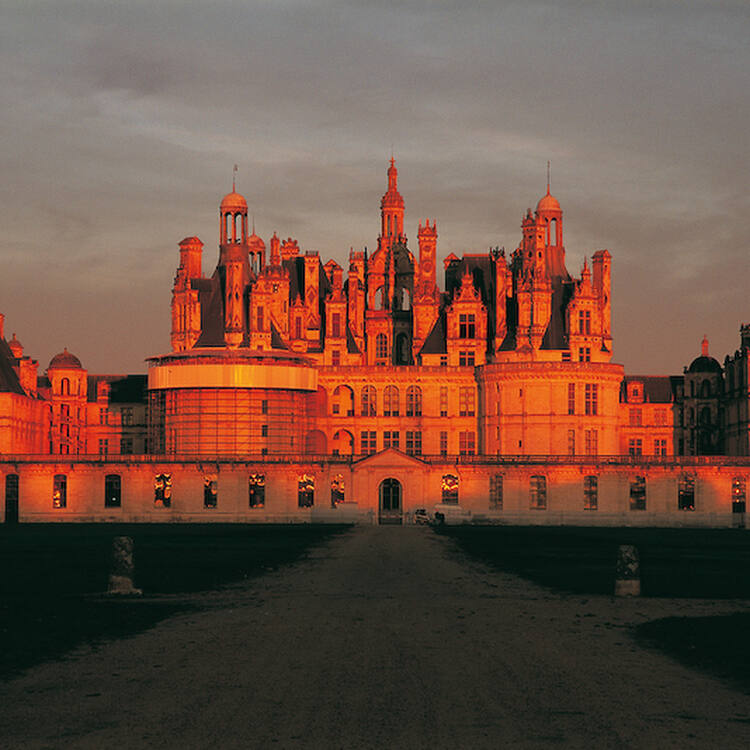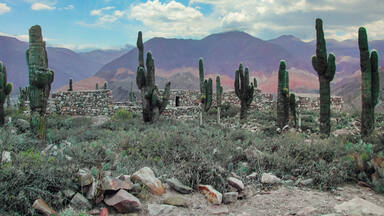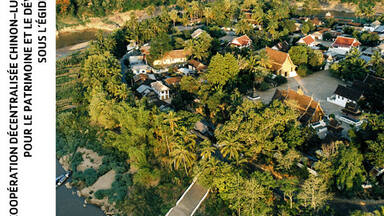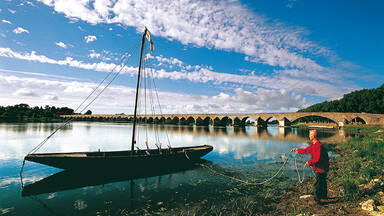The Loire Valley between Sully-sur-Loire and Chalonnes
The Loire Valley between Sully-sur-Loire and Chalonnes
The Loire Valley is an outstanding cultural landscape of great beauty, containing historic towns and villages, great architectural monuments (the châteaux), and cultivated lands formed by many centuries of interaction between their population and the physical environment, primarily the river Loire itself.
Description is available under license CC-BY-SA IGO 3.0
Val de Loire entre Sully-sur-Loire et Chalonnes
Le Val de Loire est un paysage culturel exceptionnel, comprenant des villes et villages historiques, de grands monuments architecturaux - les châteaux - et des terres cultivées, façonnées par des siècles d'interaction entre les populations et leur environnement physique, dont la Loire elle-même.
Description is available under license CC-BY-SA IGO 3.0
وادي نهر اللوار بين سالي سور لوار وشالون
تشكّل وادي نهر اللوار منظراً ثقافياً استثنائياً يشمل مُدناً وقرى تاريخية ونصباً هندسية عظيمة أي القصور، وأراض مزروعة حرثتها قرون من التفاعل بين الشعوب ومحيطها الحسيّ الذي يجسده نهر اللوار بنفسه.
source: UNESCO/CPE
Description is available under license CC-BY-SA IGO 3.0
卢瓦尔河畔叙利与沙洛纳间的卢瓦尔河谷
卢瓦尔河谷拥有最美丽、最杰出的文化景观,沿岸分布着大量的历史名镇和村庄、雄伟的建筑古迹(城堡),以及几个世纪以来人类开垦的耕地,这是人类和自然环境(主要是卢瓦尔河)相互作用、和谐发展的结果。
source: UNESCO/CPE
Description is available under license CC-BY-SA IGO 3.0
Долина Луары от Сюлли-сюр-Луар до Шалона
Долина Луары – это выдающийся культурный ландшафт исключительной живописности, включающий исторические города и деревни, величественные архитектурные памятники – замки. Также ландшафт составляют окультуренные земли, которые формировались веками в процессе взаимодействия человека с окружающей его средой и, прежде всего, с самой рекой Луарой.
source: UNESCO/CPE
Description is available under license CC-BY-SA IGO 3.0
Valle del Loira entre Sully-sur-Loire y Chalonnes
Este paisaje cultural, único en su género, posee pequeñas ciudades y pueblos históricos, grandes monumentos arquitectónicos (castillos y palacios) y tierras de cultivo, que son el resultado de la interacción entre sus habitantes y el medio físico, en particular el río Loira.
source: UNESCO/CPE
Description is available under license CC-BY-SA IGO 3.0
シュリー-シュル-ロワールとシャロンヌ間のロワール渓谷
ロワール渓谷、とりわけシュリー・シュル・ロワールとシャロンヌの間の地域は、その華麗な美しさで他に抜きんでた文化的景観を誇る。古い歴史の町や村、建築史上の偉大な記念碑であるシャトー、数世紀にわたって人間と自然、ロワール川とが共生しつつ作り上げてきた農地などが、その美しい景観の中に溶けこんでいる。この世界遺産地域には、すでに1981年に登録された「シャンボールの城と領地」が含まれる。source: NFUAJ
Loire vallei tussen Sully-sur-Loire en Chalonnes
De Loire vallei is een uitzonderlijk cultureel landschap van grote schoonheid, met historische dorpen en steden, waaronder Blois, Chinon, Orléans, Saumur en Tours. Tot de grote architecturale monumenten behoren de wereldberoemde kastelen zoals Château de Chambord. De gecultiveerde landschappen zijn gevormd door vele eeuwen interactie tussen de bevolking en de fysieke omgeving, in de eerste plaats de Loire zelf. Het landschap kent een grote variatie: steden, tuinbouw, wijngaarden en jachtbossen. De Loire vallei en de vele culturele monumenten illustreren de invloed van de idealen van de Renaissance en de Verlichting op het West-Europese denken en design.
Source: unesco.nl
Outstanding Universal Value
Brief description
The property of the Loire Valley between Sully-sur-Loire and Chalonnes is located in the regions of the Centre-Val-de-Loire and Pays-de-la-Loire. This cultural landscape covers a section of the Middle course of the 280km river, from Sully-sur-Loire, east of Orléans up to Chalonnes, west of Angers, including the minor and major beds of the river.
It is formed by many centuries of interaction between the river, the land that it irrigates and the populations established there throughout history.
The Loire has been a major communication and commercial axis since Gallo-Roman times up until the 19th century, thus encouraging the economic development of the valley and its towns. Witness to the many works destined to channel the river for navigation and the protection of humankind and the land against flooding, are the ports or dyke systems, sometimes in stonework, that punctuate the river.
The Loire has formed as much the rural landscapes, in the organization of the land and the types of culture (market gardening, vines), as the urban landscapes. Human settlements, isolated farms, villages and towns, translate both the physical characteristics of the different parts of the river and their historical evolution. The tufa and slate architecture, the troglodyte dwellings, the urban fabric, all reflect this. In the boundary of the property, the banks of the Loire are punctuated by villages and towns among which are Sully, Orléans, Blois, Amboise, Tours and Saumur.
The political and social history of France and Western Europe in the Middle Ages as well as during the Renaissance, the period when the Loire Valley was a seat of royal power, is illustrated by the buildings and castles that have made it famous, such as Chambord, Chenonceau, Amboise, Blois and Azay-le-Rideau. Benedictine abbeys first of all, then medieval fortresses, they were transformed during the Renaissance into country houses for recreation and pleasure, with gardens and vistas open to the countryside. The Loire Valley also contains a series of large, important Romanesque churches, witness to the expression of faith of the sovereigns and the people: Saint-Benoît-sur-Loire, Fontevraud, Cunault, the ogival churches of Blois and Candes.
In the 15th and 16th centuries, the Loire Valley constituted a major cultural area for encounters and influences between the Italian Mediterranean, France and Flanders, and participated in the development of garden art and the emergence of interest in the landscape.
Criterion (i): The Loire Valley is noteworthy for the quality of its architectural heritage, in its historic towns such as Blois, Chinon, Orléans, Saumur and Tours, but in particular in its world-famous castles, such as the Château de Chambord.
Criterion (ii): The Loire Valley is an outstanding cultural landscape along a major river. It bears witness to an interchange of human values and to a harmonious development of interactions between humankind and their environment over two millennia.
Criterion (iv): The landscape of the Loire Valley, and more particularly its many cultural monuments, illustrate to an exceptional degree the ideals of the Renaissance and the Age of Enlightenment on western European thought and design.
Integrity
The historical trajectory of the Loire Valley is clearly visible in the current landscape. The variety of architectural, urban and landscape typologies of the property is fully and widely represented over 280 kilometres.
Authenticity
The Loire Valley conserves a high degree of authenticity of the ensemble, and notably the principal urban centres and monuments through their uses and materials, thanks to numerous conservation works. However, several factors risk affecting the property: agricultural mutations, urban spread, installation of activity zones surrounding towns and traffic axes, major construction projects (bridges, motorways).
Protection and management requirements
The ownership regime of this extensive property is very diverse, including numerous public and private ownerships. The river and its banks belong in the public river domain directly managed by the State. The protection of the property is based on the complementarity of several regulations according to the heritage, environment and urbanism codes, notably: Historic Monuments and their surroundings, Remarkable Patrimonial Sites, listed or inscribed sites, natural reserves.
Several hundreds of buildings, public and private, large castles or more modest monuments are protected under the Heritage Code (Historic Monuments), some since the 19th century, and a certain number are undergoing restoration and receive regular maintenance. Several dozen urban centres are protected under the Remarkable Patrimonial Sites, which has enabled the launching of major rehabilitation programmes. Finally, several dozens of sites are listed for application of the Environment Code to enable the preservation of large areas of the landscape. The works linked to the river are regularly maintained or restored. Biodiversity protection preserves the bed of the river.
On this very vast territory, undergoing dynamic demographic and economic change, coordination of the management of the property is ensured by the State, that has appointed a Prefect Coordinator, and the two regions concerned with specific facilities (a structure and an orientation committee adapted to the property).
The management plan identifies the major risks that threaten the property and includes proposals to reduce them. The implementation of additional regulatory protective measures, the awareness raising and training of local collectivities and populations to the challenges for the protection of the inscribed property, the surveillance of important equipment projects, are continuously carried out by the public and private stakeholders of the Val de Loire.
Moreover, the management plan is based on a coherent interregional planning and management programme for the Loire Basin, the “Plan Loire grandeur nature” implemented by the State in 1994, and constantly updated with all the concerned actors. Its objectives include the security of populations in the face of flooding, improvement in the management of water resources, the restoration of ecological diversity, and the enhancement of the natural, landscape and cultural heritage of the Loire valleys.





